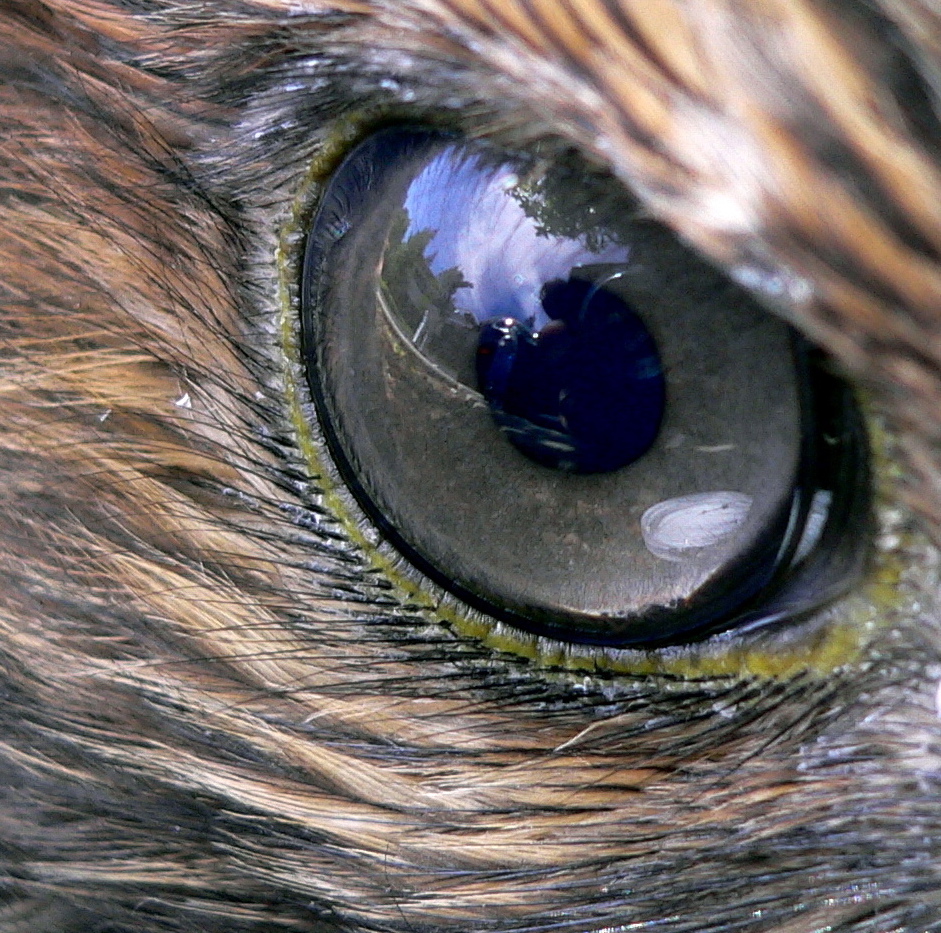The resolution of a good long-distance camera is limited by diffraction. The simple rule for this is the Rayleigh criterion:

Theta is the angular resolution, the smallest angular separation between two bright lines that can be differentiated by the system.
Lambda is the wavelength of light. You can see reds down at 700nm, and blues to 400nm. Interestingly, birds can see ultraviolet light at 360nm. The usual explanation for this is that some flowers have features only visible in ultraviolet, but I think raptors are using ultraviolet to improve their visual acuity.
D is the diameter of the pupil. Bigger pupils not only gather more light, but they also improve the diffraction limit of the optical system. The trouble with bigger pupils is that they make various optical aberrations, like spherical aberration, worse. These aberrations are typically minimized near the center of the optical axis and get much worse farther from the optical axis. So a big pupil is good if you want a high-resolution fovea and are willing to settle for crummy resolution but good light gathering outside that fovea. This is the tradeoff the human eye makes.
A human's eye has a pupil about 4mm across in bright light. According the Rayleigh criterion, human resolution at 550nm should be about 170 microradians. According to a Wikipedia article on the eye, humans can see up to 60 counts per degree, which corresponds to 290 microradians per line pair. That suggests the human eye is not diffraction limited, but rather limited by something else, such as a combination of focal length and the density of cone cells on the retina.
I wasn't able to find a good reference for the pupil diameter of a red-tailed hawk. Judging from various pictures, I'm guessing it could be smaller than a human pupil, since it appears that the hawk's eyeball is quite a bit smaller than the human eye (absolute scale). This doesn't seem good enough, since hawks are reputed to have fabulous vision. The first reference I found online suggested that hawks have visual acuity that's actually worse than humans.
Suppose that this last study was using paints that were undifferentiated in UV, in particular, around 360 nm. The researchers would not have noticed this. Suppose further that hawks are using 360 nm light for high acuity vision. The diffraction limit of a 4 mm aperture in 360 nm light is 110 microradians. This isn't 8 times better than human vision, but it is sufficient to distinguish two twigs 1 cm apart from 100 meters up.

No comments:
Post a Comment